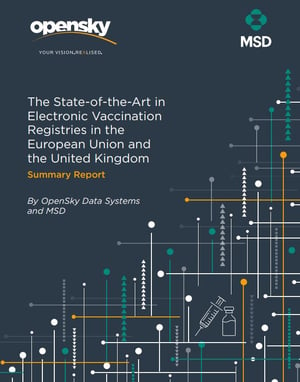How AI and Machine Learning are Revolutionising Immunisation Monitoring
In the dynamic landscape of public health, the advent of artificial intelligence (AI) and machine learning (ML) has brought a new era in immunisation monitoring. These cutting-edge technologies are redefining how we approach vaccine distribution, coverage analysis, and real-time decision-making. This blog explores the transformative role of AI and ML in immunisation monitoring, providing insights relevant to public health authorities and market access teams in the pharmaceutical industry

Understanding the Power of AI and Machine Learning
AI and ML are revolutionising numerous sectors, and public health is no exception. These technologies analyse vast datasets to identify patterns, predict trends, and inform strategic decisions. In the context of immunisation, AI and ML can significantly enhance the efficiency and effectiveness of vaccination programs.
Efficient vaccine distribution is crucial for achieving high immunisation coverage.
AI and ML algorithms can analyse demographic data, geographic information, and vaccination records to optimise distribution strategies. This ensures vaccines reach the populations that need them most, reducing wastage and improving overall coverage.
For example, during the COVID-19 pandemic, AI-driven models helped predict areas with high vaccine demand and optimise supply chains accordingly. The Centers for Disease Control and Prevention (CDC) leveraged these technologies to enhance their distribution efforts, ensuring timely and equitable access to vaccines.
Predictive Analytics and Real-Time Monitoring for Immunisation Coverage
Predictive analytics, powered by AI, can forecast vaccination coverage and identify regions at risk of low immunisation rates. By analysing historical data and current trends, AI models provide actionable insights that enable health authorities to implement targeted interventions proactively.
The World Health Organisation (WHO) underscores the importance of predictive analytics in immunisation programs. By forecasting future vaccination rates, public health officials can better allocate resources and plan outreach initiatives, ultimately improving immunisation coverage.
Real-time monitoring is essential for effective immunisation programs, especially during large-scale vaccine rollouts. AI and ML facilitate the real-time analysis of data from various sources, including electronic health records (EHRs), mobile applications, and social media platforms. This enables health authorities to adapt their strategies based on real-time insights.
During the Ebola outbreak in West Africa, real-time data analytics were crucial for tracking vaccination efforts and coordinating responses.
In Nigeria, AI-driven predictive models were instrumental in the polio eradication campaign. These models analyzed demographic data, vaccination records, and environmental factors to identify regions at high risk of polio outbreaks. This allowed health authorities to focus their efforts on high-risk areas, significantly reducing the incidence of polio.
The United Kingdom's National Health Service (NHS) utilised AI and ML to monitor the COVID-19 vaccination campaign. By integrating data from vaccination sites, hospitals, and public health databases, AI models provided real-time insights into vaccine administration. This helped optimise resource allocation and improve vaccination coverage across the country.
Overcoming Challenges in AI-Driven Immunisation Monitoring
While AI and ML offer significant benefits, they also present challenges, including data privacy concerns, the need for standardised data collection methods, and the integration of diverse data sources. Addressing these challenges requires collaboration among governments, healthcare organisations, and technology providers.
The future of immunisation monitoring lies in the continued integration of AI and ML. By leveraging these technologies, public health authorities can enhance the effectiveness of immunisation programs, ensure equitable vaccine access, and improve overall public health outcomes.
In conclusion, the power of AI and ML in immunisation monitoring is undeniable. These technologies offer innovative solutions to longstanding challenges, driving meaningful change and protecting communities from vaccine-preventable diseases. By harnessing the potential of AI and ML, we can ensure the success of immunisation programs and safeguard public health for future generations.



